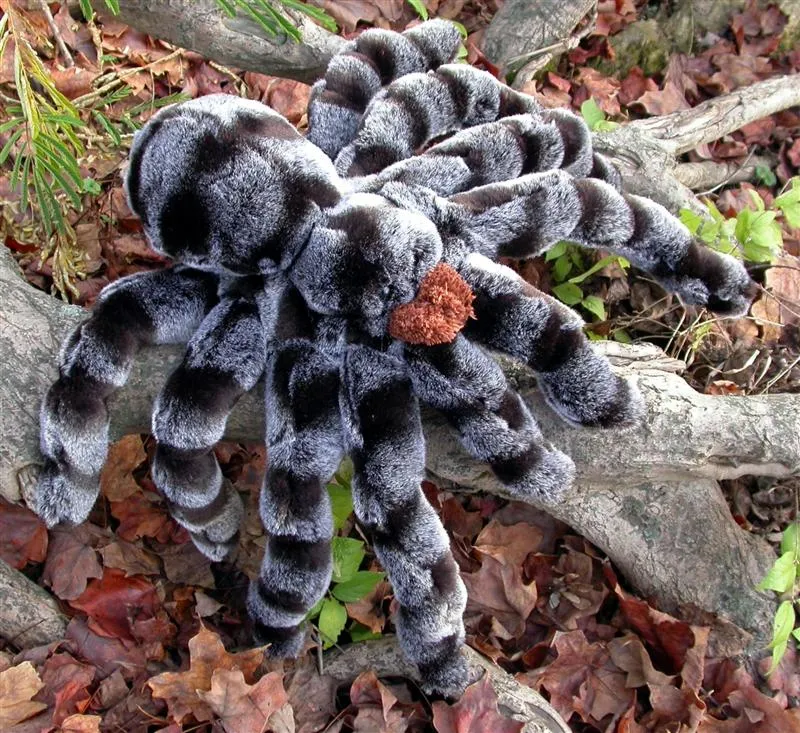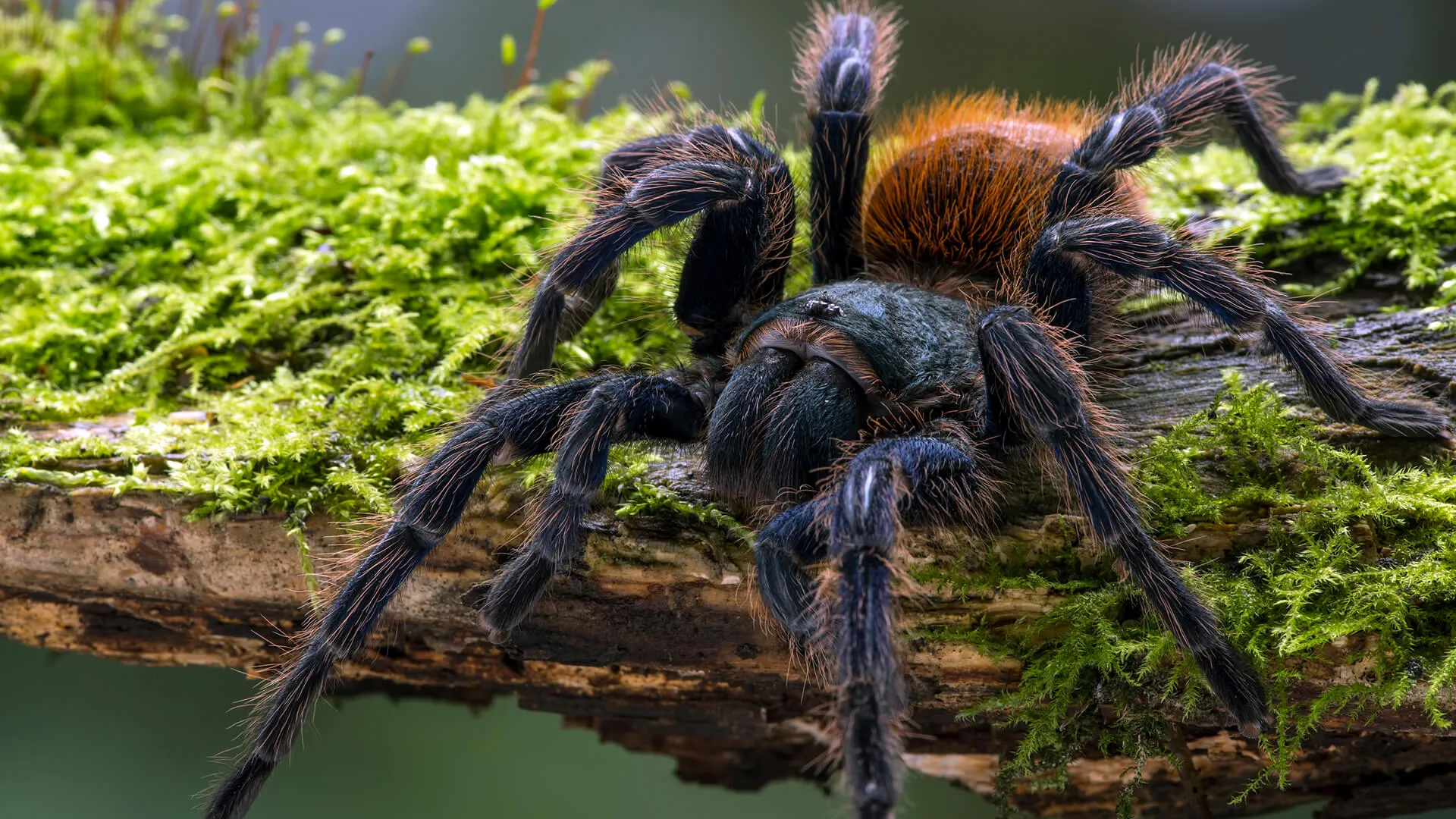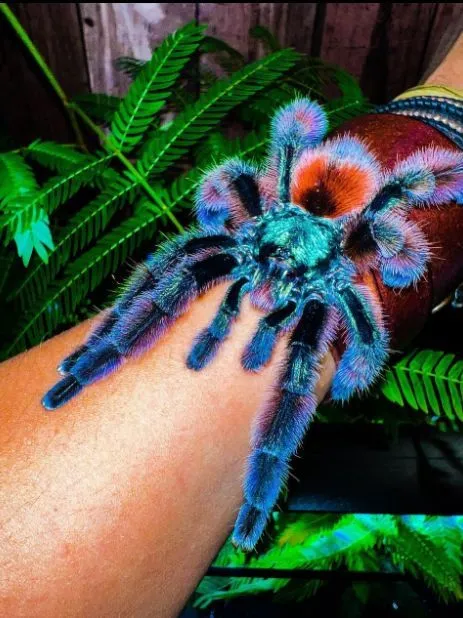Tarantula Spider Facts: Amazing Facts
Tarantulas, members of the Theraphosidae family, are some of the largest spiders in the world, captivating both scientists and enthusiasts alike. These arachnids have a rich history, with fossils dating back millions of years, illustrating their remarkable resilience. While often feared, tarantulas are fascinating creatures that play a vital role in their ecosystems. Their diverse adaptations, from their venomous fangs to their complex mating rituals, make them a subject of endless study and fascination. This article delves into ten amazing facts about tarantulas, exploring their unique characteristics, behaviors, and the environments they inhabit, offering a deeper understanding of these remarkable creatures. Prepare to be amazed by the hidden wonders of the tarantula spider!
Tarantula Spider Appearance & Anatomy
The appearance of a tarantula is often the first thing that grabs attention. They have a hairy body, which can range in color from brown and black to vibrant hues like blue and orange, depending on the species. Their bodies are divided into two main parts: the cephalothorax (fused head and thorax) and the abdomen. The cephalothorax houses the spider’s eyes, mouthparts (including fangs), and legs. The abdomen contains the digestive system, heart, and reproductive organs. Tarantulas possess eight legs, each covered in sensory hairs, and two pedipalps, which they use for manipulating food and sensing their environment. Their fangs are used to inject venom into their prey, and the size of these fangs can vary significantly depending on the species, some reaching over an inch in length. The overall anatomy is a testament to their predatory lifestyle and survival skills.
Tarantula Spider Size and Colors

Tarantulas showcase a wide range of sizes and colors, making them diverse in appearance. The size of a tarantula can vary greatly depending on the species, with some reaching a leg span of over 10 inches, while others are considerably smaller. The Goliath Birdeater (Theraphosa blondi) is the largest known tarantula species, whereas the smallest species measure only a few inches in leg span. Coloration is another fascinating aspect, with tarantulas displaying a spectrum of colors from earthy browns and blacks to vibrant blues, oranges, reds, and yellows. This coloration serves various purposes, including camouflage, attracting mates, and warning predators. The diversity in size and color adds to the allure of these spiders, making each species unique and visually appealing.
Tarantula Spider Habitat and Distribution
Tarantulas inhabit a variety of habitats across the globe, primarily in tropical and subtropical regions. They can be found in North and South America, Africa, Asia, and Australia. Their habitat preferences vary, with some species thriving in rainforests, while others prefer deserts, grasslands, or even burrows in the ground. They are well-adapted to their respective environments, with adaptations such as camouflage and nocturnal behavior helping them to survive. The geographical distribution of tarantulas is influenced by factors like climate, vegetation, and the presence of prey. Understanding their habitat helps in appreciating their ecological role and conservation needs. Some species are more adaptable and found across diverse terrains, where they construct elaborate webs to trap their prey.
Tarantula Spider Behavior: What They Do
Tarantulas exhibit fascinating behaviors, including hunting, mating, and defense mechanisms. They are primarily nocturnal hunters, using their keen senses to locate and ambush their prey. Their diet consists of insects, other arthropods, and sometimes small vertebrates like lizards and rodents. Mating rituals can be complex, with males performing elaborate dances to attract females. The female may become aggressive, so the male must be cautious. When threatened, tarantulas can display defensive behaviors such as raising their front legs, hissing, and flicking urticating hairs (irritating hairs) to deter predators. Their behaviors are a combination of instinct and adaptation, shaping their survival strategies within their ecosystems. This unique behavior makes them one of the most intriguing spiders in the world.
Tarantula Spider Diet and Feeding Habits

The diet of a tarantula largely consists of insects and other arthropods, but can also include small vertebrates. They are opportunistic predators, meaning they will eat whatever is available. The size of the prey depends on the size of the tarantula, with larger species capable of taking down small lizards or even mice. They use their fangs to inject venom, which immobilizes the prey and begins the digestive process. Tarantulas then use their chelicerae to crush the prey and suck out the liquefied nutrients. Feeding habits vary with age and species, with juveniles needing smaller, more frequent meals. Proper feeding is crucial for their health and growth. Providing a varied diet ensures that they receive the necessary nutrients for a healthy life. These spiders are truly remarkable predators.
Tarantula Spider: Venom & Bite Information
Tarantulas are venomous, but their venom is generally not considered life-threatening to humans. A tarantula bite is often compared to a bee sting, causing localized pain, redness, and swelling. However, individual reactions can vary, and some people may experience more severe symptoms, such as muscle cramps or nausea. The venom is used primarily to subdue prey, not as a defense mechanism against humans. In addition to their venom, tarantulas can also flick urticating hairs from their abdomen, which can cause skin irritation and respiratory problems if inhaled. Proper handling and awareness are essential when interacting with tarantulas to minimize the risk of bites or exposure to these hairs. Understanding these aspects helps in handling tarantulas safely.
Tarantula Spider Life Cycle and Molting
The life cycle of a tarantula involves several stages, from egg to adult. Female tarantulas lay hundreds of eggs in a silk egg sac, which they protect until the spiderlings hatch. These spiderlings undergo several molts as they grow, shedding their exoskeleton to allow for growth. Molting is a vulnerable period for tarantulas, as they are soft and defenseless. The frequency of molting decreases as they mature, with adults molting only once or twice a year. The molting process involves the spider separating its old exoskeleton and emerging with a new, larger one. The life span of tarantulas varies depending on the species, with females often living for decades, while males have a shorter lifespan. This complete process makes the tarantula a fascinating creature.
Tarantula Spider: Different Species to Know

There are numerous tarantula species, each with its unique characteristics and appearance. Some popular species include the Mexican Redknee (Brachypelma hamorii), known for its striking orange and black markings, and the Chilean Rose Hair (Grammostola rosea), a common and relatively docile pet. The Goliath Birdeater (Theraphosa blondi) is the largest tarantula species, famous for its size. Other notable species include the Pinktoe tarantulas (Avicularia species), which are known for their arboreal lifestyle and vibrant colors. Each species has specific care requirements, habitat preferences, and behaviors, making them unique. Researching different species is crucial for understanding and appreciating the diversity of tarantulas and their needs.
Tarantula Spider as Pets: Pros and Cons
Keeping tarantulas as pets has become increasingly popular, offering a unique and relatively low-maintenance experience. The pros include their relatively low care requirements, the fascination they provide, and their quiet nature. They don’t require daily walks or extensive interaction, making them a good choice for people with busy lifestyles. However, there are also cons to consider. Tarantulas can bite, though their venom is typically not dangerous to humans, and their urticating hairs can cause irritation. Their specific needs regarding temperature and humidity require careful management. Furthermore, they are not as interactive as some other pets and may not be suitable for everyone. Before getting a tarantula, it is important to be informed and prepared for their specific needs.
